[Commodore 64, Avalon Hill]
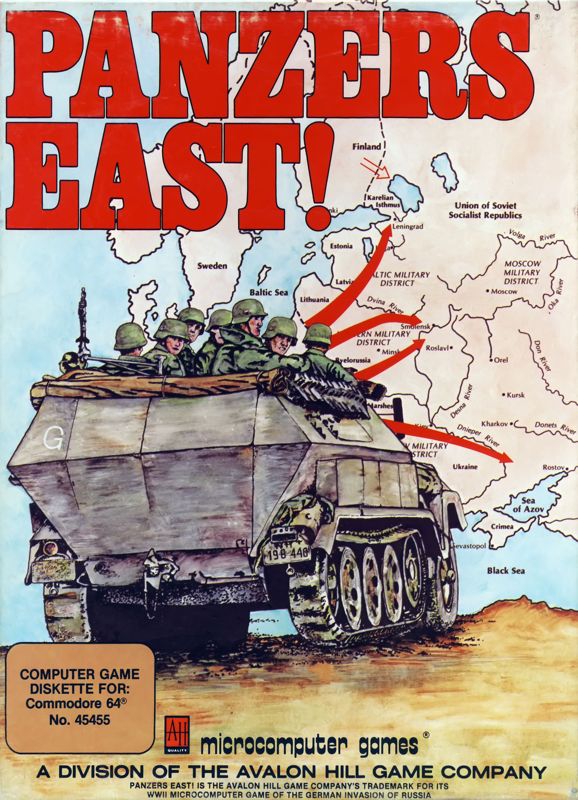
The Eastern Front has been curiously neglected by early computer wargames – possibly because no one wants their game compared to Chris Crawford’s Eastern Front 1941. Outside of Crawford’s production, the only game so far on this blog covering specifically this front has been Bruce Keithledge’s Dnieper River Line, a mediocre computer-assisted board game published by Avalon Hill in 1982. In 1983, Avalon Hill returned to the topic with Russ Beland’s Panzers East!, covering the first 24 weeks of the German invasion of the Soviet Union. Let me manage your expectations immediately: it’s no Eastern Front 1941. Does it at least beat Dnieper River Line?
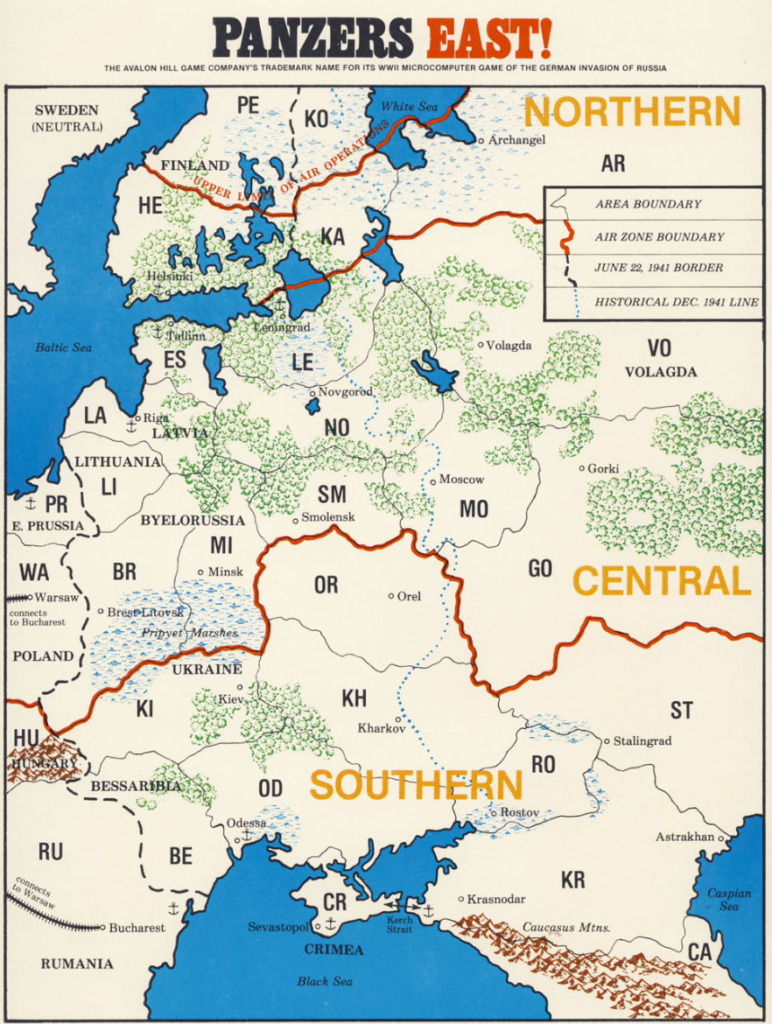
But first, full disclosure! What you are going to see is my third “final” campaign, played in the usual self-imposed Ironman mode. I stopped my first game after getting bogged down by week 16 at more or less the historical frontline of December ’41 as it was clear I was not going to get any further and that it was going to be a boring story to tell: look! Avalon Hill made a frustrating game producing the historical outcome +/- 10%.
For my second attempt, I wanted to cheese a bit the rules of the game (no limit to naval transports) to attack Leningrad from Finland immediately. Alas, either I was unlucky or Leningrad has some sort of hardcoded magical protection because half of the German army needed more than 10 weeks to take it. It was going to be an even worse story to tell: look at me in Leningrad exchanging blows with the Soviets turn after turn!
I realized I was not thinking big enough. I had to do things differently. I had noticed in my earlier games that when I isolated the Kola Peninsula from the rest of the Soviet Union, it stopped receiving reinforcements. Could I replicate this at scale? Maybe!
Hence, my new masterplan: the largest Cannae in history!
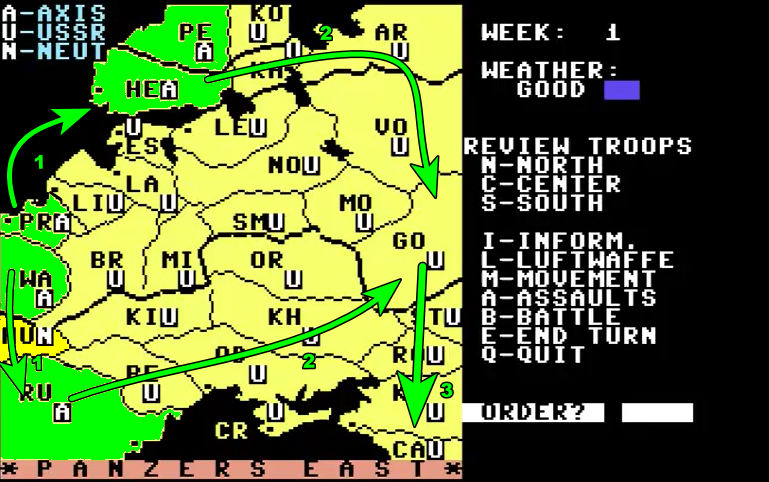
I will ignore Belarus and the Baltics to transport one-half of my force to Helsinki and the rest of my force to Romania, leaving zero (0) defenders in the centre. After that, I will move forward as fast as possible in two massive Schwerpunkts, isolating the Western Soviet Union from Brest-Livstock to Moscow. My concentrated force will then assault the non-isolated territories in the southeast while the rest of the Soviets die of starvation. Stupid, yet pragmatic ! The Führer will love it. The generals maybe less so.
But before I can start the game and put my plan into action, I need to make two preliminary decisions:
- First, I must select my priorities for this campaign:
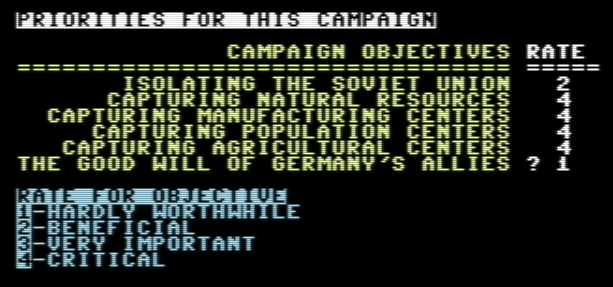
In typical Third Reich fashion, I decide not to prioritize and request everything, except “isolating the Soviet Union” (it feels secondary to destroying the Soviet Union) and “the goodwill of Germany’s allies” because who cares about non-Germans.
From this, the game outputs a list of objectives:
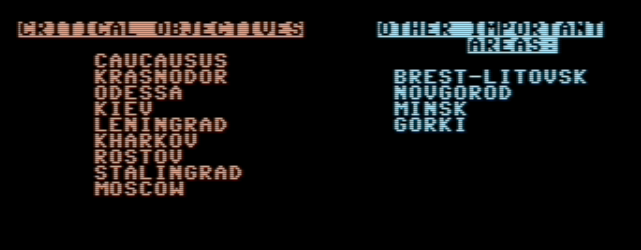
And now, checking those locations on the map:
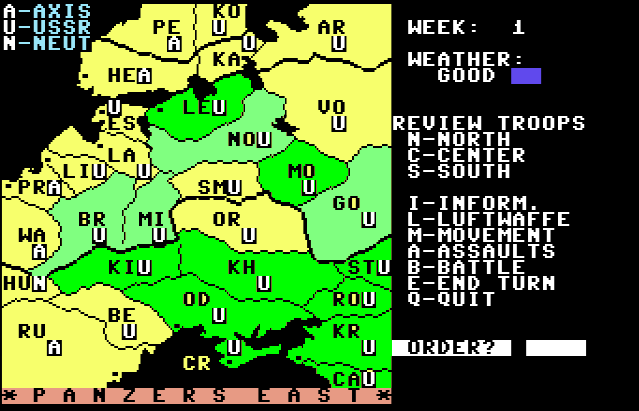
Nice! This particularly fits with my plan to move South from Gorki once I complete my continental-scale motti.
- Then, I must choose which percentage of the Luftwaffe will be allocated to destroying the Soviet planes on the ground. My answer is “Yes”.

And then the game begins.
I. The Warsaw-Vologda Express (June 22nd to August 3rd, 1941)
Germany starts with massive forces in Warsaw and Prussia: 215 infantry divisions and 93 mechanized divisions. There are also some more divisions in Finland (but not the Finnish standing army yet) and yet more divisions in Romania, including (weak) Romanian troops (“ally”).
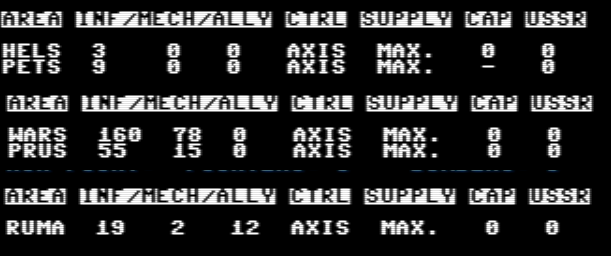
I proceed as planned, and transfer all my forces currently in Warsaw to Romania and all my forces currently in Prussia to Finland:
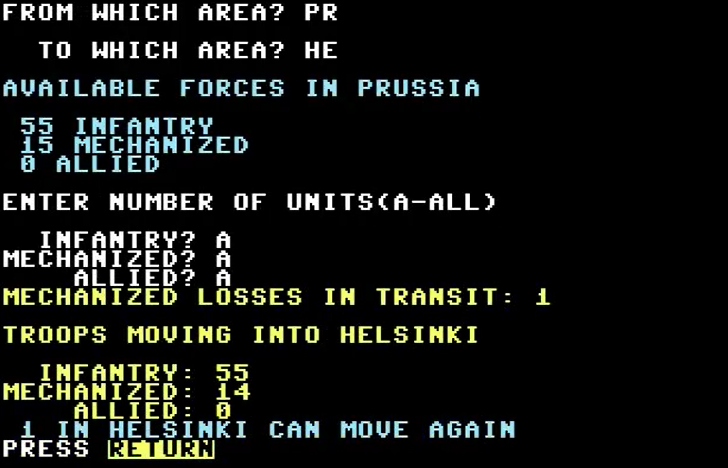
Meanwhile, the little forces I have already in position assault Karelia and Bessarabia before the Soviets can prepare. Both assaults are successful, despite significant losses in Karelia.
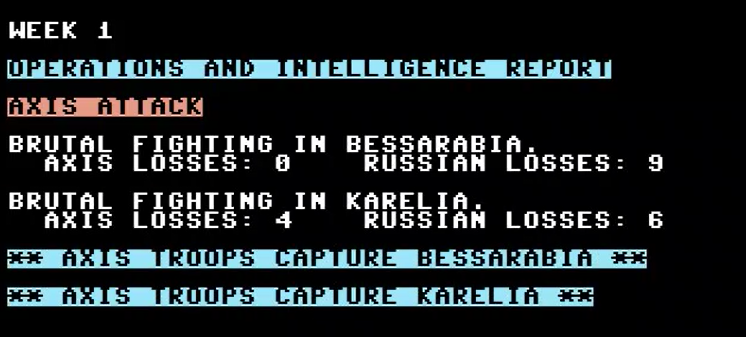
Alas, the Soviets notice that I deserted Prussia and Warsaw, and consequently attack. They lose 27 units out of the 35 they have in this attack, but then occupy the region without combat. I am going to tell the Führer it is all part of the plan and that we are doing the Masurian Lake battle v2.

Unfortunately for the Soviets, the game hands me a massive of wave of reinforcement in Warsaw on the second week which I use to destroy their attack. Meanwhile, the troops which had conquered Bessarabia in the South and Karelia in the North push forward, with varied results:
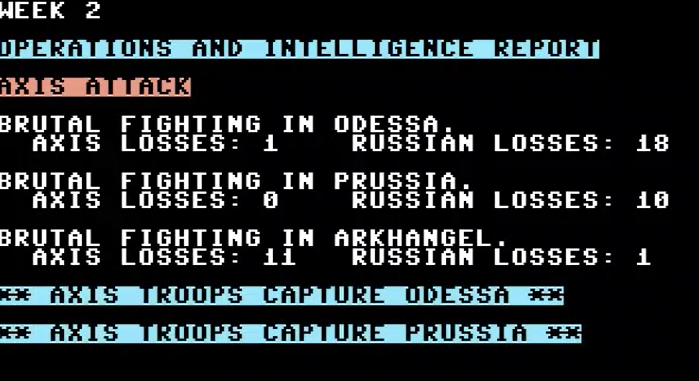
I stop to wait for the troops from Warsaw and Berlin week 3, and week 4 I go all in on Arkhangel and Kharkiv:
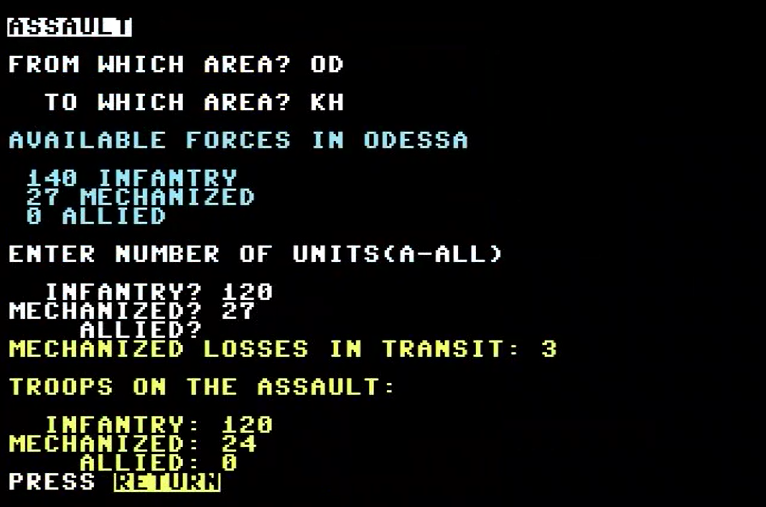
Kharkiv easily falls, but Archangel resists. Here is the situation 4 weeks after the beginning of the war:
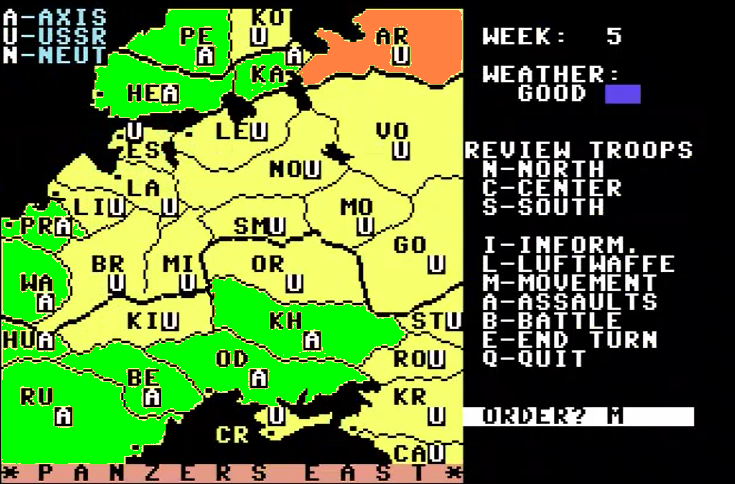
Finally, the 7th week after the beginning of the war, I finally close the trap, with only marginal resistance remaining in Volagda. The core of the Soviet Union is surrounded!
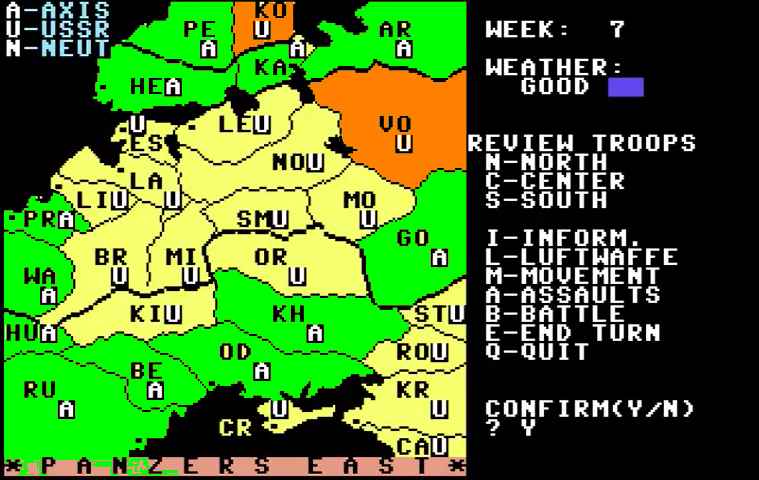
II. The pivot to the South (August 3rd to October 12th, 1941)
The encirclement of the Soviets is concluded week 8. By that point, I have already moved to the next part of my plan, the conquest of the South from Stalingrad to the Caucasus, with forces coming from Vologda :
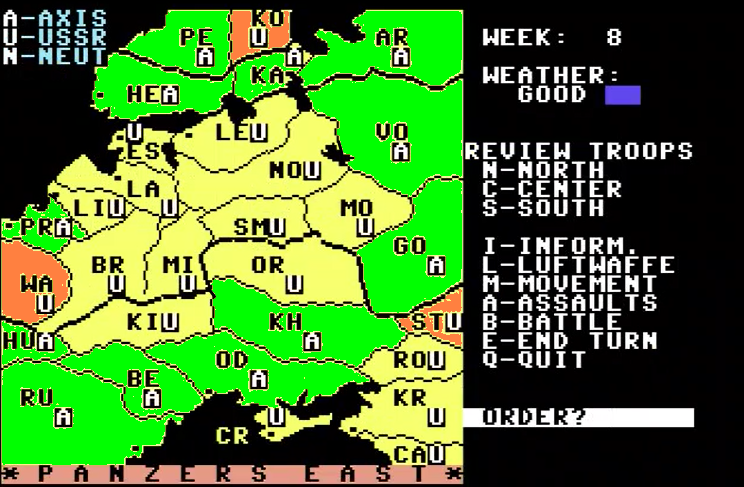
I’ve lost a lot of momentum. To avoid losing Soviet provinces to partisans, I must leave behind strong garrisons of German infantry (around 10-15 of them, and only German infantry: non-Germans and mechanized don’t do anything at all). The Soviets are also attacking here and there every turn, which means I need to keep some infantry on top of the bare minimum to avoid passing below the threshold due to losses, AND a mobile firefighter force to quash the Soviet attackers before they become too numerous. This ties a lot of my forces in garrison duty:
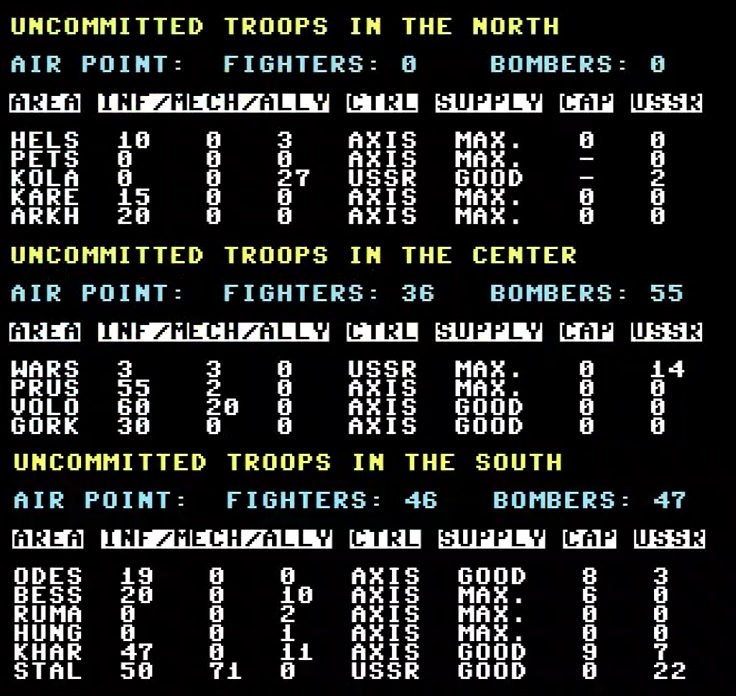
To compensate, I move all my air force to the Southern Theater and always make sure to maximize the supply received by my mechanized divisions as max supply doubles their combat effectiveness.
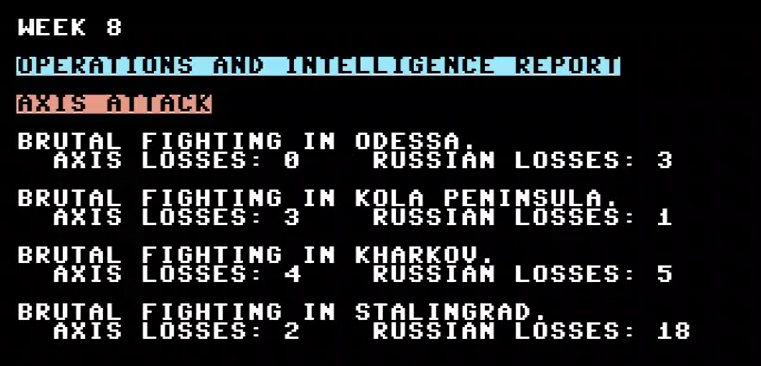
Meanwhile, the Soviets try to break the encirclement by going all-in on Kharkiv…

… and it pays off for them as I receive massive losses, though most of them absorbed by the Romanian and Hungarian allies:
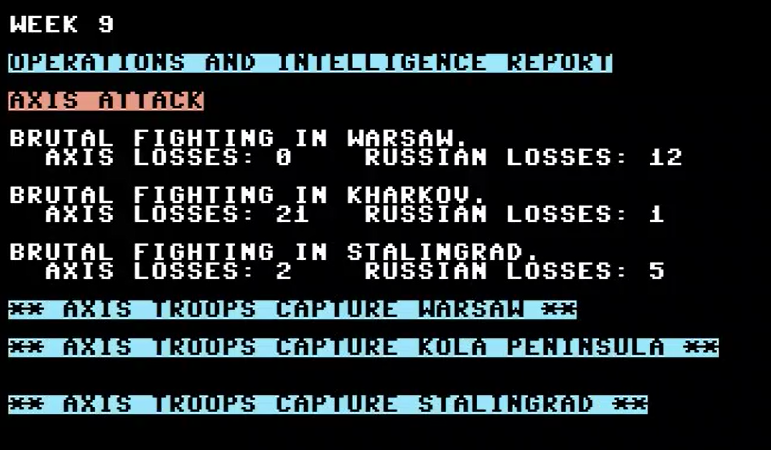
Still, the army from Vologda manages to retake control of Kharkiv, and an ill-prepared Soviet attack from Rostov to Stalingrad allows me to get rid of most of Rostov’s garrison almost for free. Krasnodar to the South resists a bit more, but by the beginning of week 14 I can finally isolate Crimea:
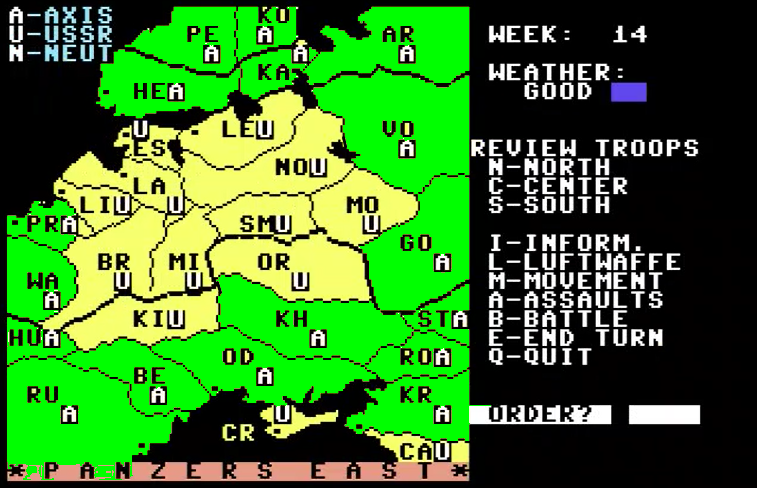
I move to Caucasus and Crimea, and what was going to be another long attrition battle becomes a short siege after suicidal Soviet counter-attacks:
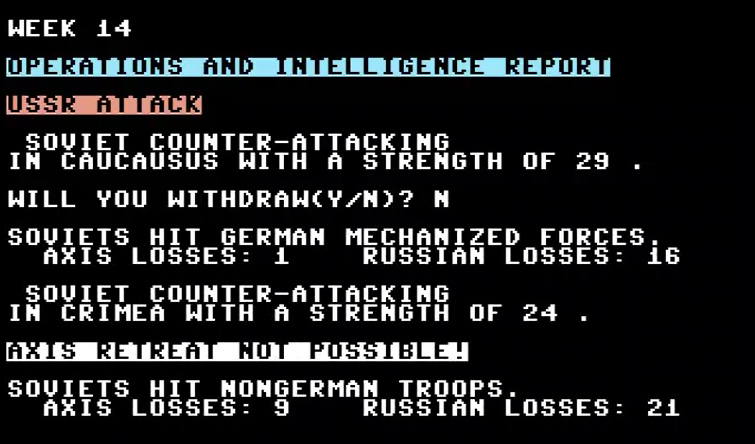
The 17th week, just as the rasputitsa begins, all the South of the Soviet Union is under German control!
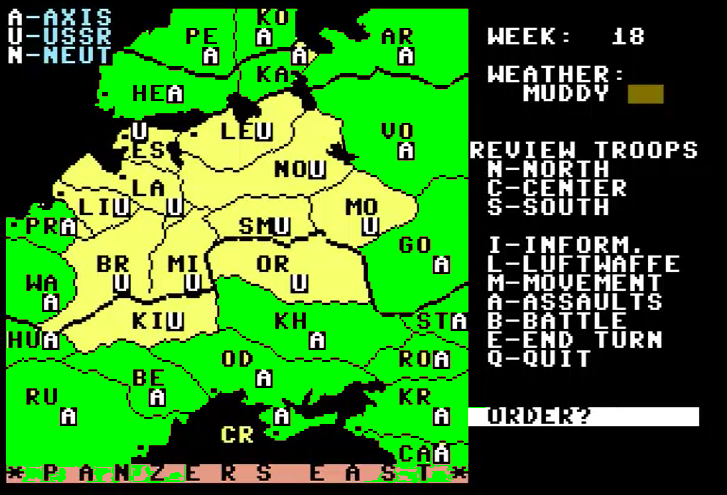
III. The Battle of Kyiv (October 12th to November 16th, 1941)
Now that I have conquered the South, all that remains of the Soviet Union is surrounded by Germany. Surely what’s left of the Soviet Union is starved and about to fall like a rotten fruit?
Well, not at all. The Soviet Union is thriving, with more defenders than I could ever handle in Moscow and in Leningrad. It looks like isolating 11 provinces in the middle of the map doesn’t actually isolate them at all. Realistic, but unexpected.

Out of all my remaining “critical targets”, Kyiv is the least defended, so I transfer my troops currently in the Caucasus by ship to launch a final assault on the capital of Soviet Ukraine. Alas, as the snow sets in, half of my planes are grounded and my units fight at less than full capability. It is a disaster.


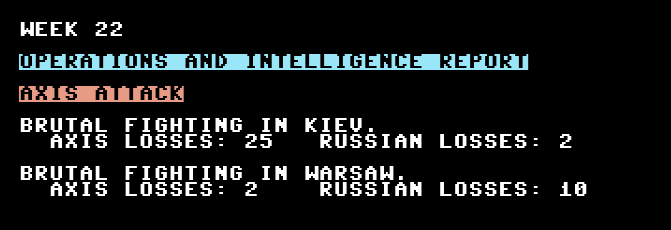
That’s the end of the German operations, and I end the campaign two weeks earlier than I could have (the game allows it, in exchange of extra victory points). Despite taking most of my objectives and surrounding the Soviet Union, the campaign is considered a draw.
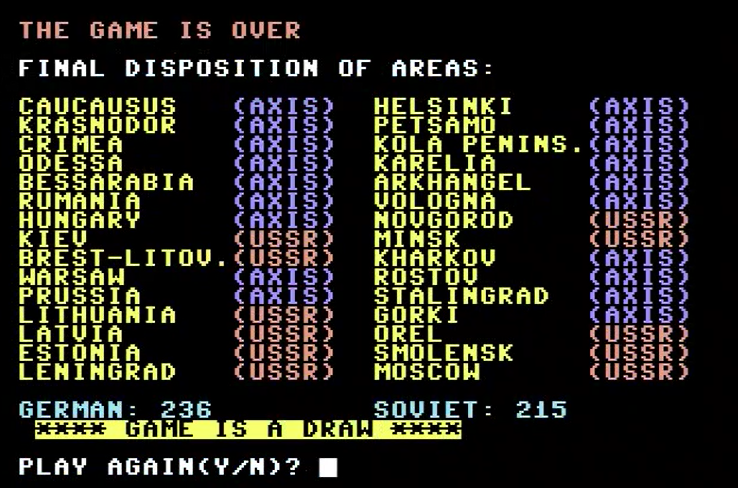
Ah, well! Better luck next year!
Ratings & Reviews

Panzers East!, by Russ Beland, published by Avalon Hill, USA
Genre: Land operations
First release: October 1984 on Commodore 64, TRS-80 and Color Computer
Average duration of a campaign: Two hours
Total time played: Four hours
Complexity: Average (2/5)
Final Rating: Obsolete
Ranking at the time of review: 76/117
As with several other Avalon Hill titles, there is no information to be found on the author (Russ Beland) nor the circumstances around the game’s creation. Even the date is doubtful. Panzers East was tagged “coming soon”, “planned for release shortly” or variations of “should be released by the time you read those lines” consistently from mid-1983 to December 1984 – Avalon Hill even tricked 80 Microcomputing into putting the game on the eligible list for the 1983 Reader’s Choice Awards. It seems the game was ultimately released around October 1984, and already forgotten by 1985.
A. Presentation: Very poor. It is a menu game with only a map to brighten it, and still I am lucky : the Color Computer and TRS-80 versions don’t even have the map!
B. UI, Clarify of rules and outcomes: Terrible. Rules, in particular Soviet supplies (how do you cut them!) and combat resolutions, are barely explained in the game.
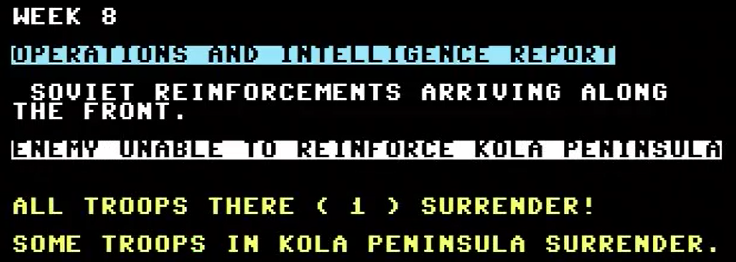
Also, for the record, despite the game stating that “all thoops there surrender”, there was still 1 enemy unit left!
Two menus are missing from the Commodore 64 version: a recap of the objectives (if you did not screencap them/ write them down at the beginning of the game there is no way to know what province you need to take) and the “terrain type” for each province.

As to the real impact on combat resolution, your guess is as good as mine!
C. Systems: Very poor. The game has several systems, but all of them are poorly thought-out or implemented:
- There is a supply system, but it is so streamlined that I wonder why it is there in the first place as it does not consider the number of units to supply nor the distance to Germany. I never had a province fall below “Good”, even in the middle of the rasputitsa. The only difference between “good” and “maximum” supply levels is that the latter doubles the attack strength of mechanized units.
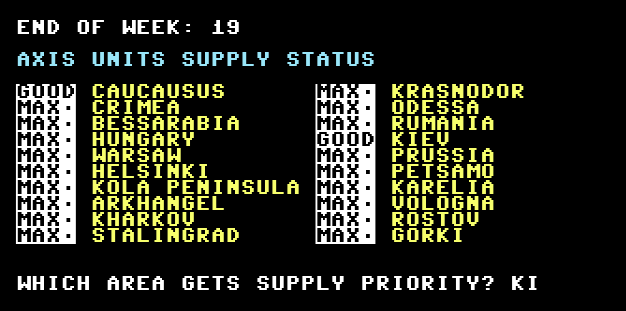
- The game has 4 possible allocations for your planes (combat air patrol, escort, strafe and bombing) but given the weakness of the Soviet Air Force combat air patrol and escort are almost useless. Air losses are marginal anyway, and I ended up the campaign with more planes than I started. Their impact on the battlefield is minor anyway : maybe 4 Soviet ground losses in a lucky week.
- The “Allies” are extremely weak and cannot even be used for garrison duty, so they all end up being another marginal combat bonus and nothing more.
With highly random combat, no real supply system, minimal impact of the Air Force and mostly fungible units, the game is shallow. The player must push their units to take as many territories as possible by turn, with luck playing a major role: combat rolls need to go in the player’s direction because the player will only receive a trickle of reinforcements after week 2 and because once the player has moved into an enemy province no retreat is normally possible (obviously an oversight, given the player is offered to do so if and only if the Soviets counter-attack). Later in the game, even the best combat rolls won’t help you given the number of defenders, the player will have to hope for one of those pointless “counter-attacks” during turn resolution to drain Soviet manpower.
D. Scenario design & balancing: Very poor. There are only two possible set-ups (historical or “fully prepared”, the latter assumes that the Germans have not squandered their resources in the Balkans before attacking the Soviet Union), though the list of objectives can vary. I found the map poorly designed, leaving to the player to choose between always attacking the same starting regions or cheesing the game by transferring their forces to Finland.
The AI seems to roll a die rather than plan strategically: it sometimes “counter-attacks” a force several times its size or totally ignores undefended provinces. It is also strange to see the Soviet Union losing more than 75% of its army to attrition when crossing a province.
E. Did I make interesting decisions? Rarely, on resource allocation. This was drowned in many uninteresting decisions.
F. Final rating: Obsolete. The game is a dry slog I cannot recommend, that may generate realistic outcomes if you play by the book. I rank it even worse than Dnieper River Line.
I wondered why I rated this game so much worse than The Fall of Rome when both games are based on hoping that my units beat their opponents in as many country-sized provinces as possible. But The Fall of Rome did that much better. First, the economy/supply system of The Fall of Rome made me care about both the strategic level and the individual local situations, whereas in Panzers East! I only ever cared about the location of my one or two doomstacks. Additionally, in the Fall of Rome, every decision seemed to be an arbitrage (Auxiliaries? But do I really need them this turn? And if I do them should I keep them in Thracia or move them to Macedonia?) whereas in Panzers East! there was only one good set of small decisions once you had decided which province to attack next (“of course I am going to supply in priority wherever my doomstack is, of course, I am going to allocate all my planes to support the attack in that one province I am attacking this turn”). Finally, The Fall of Rome featured recoverable setbacks, making the game dynamic, whereas in Panzers East! the game can be effectively lost on one or two poor die rolls. I believe that deep down the designers had a different vision: Russ Beland wanted his game to be realistic, even if stale, whereas Martin Edwardes wanted his game to be fun, because who cares if the player conquers Persia, Armenia and Sarmatia.
Reception
I could only find two reviews for the game:
- Nevin Tremplin reviewed the game in June 1985 for The Rainbow, the magazine that specialized on the Color Computer which was, as we know, starved for wargames. That’s probably why the review is quite positive, concluding “For those of you with an interest in the eastern front war, or any wide-scale conflict involving the military aspects of expansion and occupation, Panzers East! will give many evenings of competition.”
- Jeff Seiken reviewed the game in October 1985 for Commodore Power Play. He reckons that it “works surprisingly well for a game of low complexity”, but finds the map poorly designed, saying for instance that the player cannot get around the Soviet concentration in Belarus as the Germans historically did because it is represented as only one region in the game, further adding “two out of the three major jump-off areas for the Germans on turn one are adjacent to only one Soviet area apiece (…) the opening move of the game will therefore almost always be exactly the same.” Ah! What a failure of imagination, Jeff.
I feel I spent more time than I should have on Panzers East!, but the following game will be shorter, snappier and possibly better.